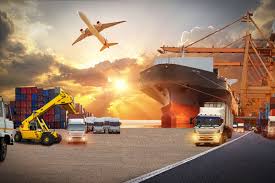Transportation and logistics are critical components of modern economies, enabling the movement of goods, people, and information efficiently and reliably. In the context of World War I, transportation and logistics played a pivotal role in sustaining military operations and shaping the outcome of the conflict. Here’s an overview of transportation and logistics during World War I, as well as their broader significance:
Transportation and Logistics in World War I
1. Railroads
- Role: Railroads were the backbone of transportation during World War I, used to move troops, equipment, and supplies quickly across vast distances.
- Examples:
- Germany’s extensive rail network allowed rapid mobilization at the start of the war.
- The French and British used railroads to supply their forces on the Western Front.
- Impact: Railroads enabled the rapid deployment of forces but also became targets for enemy attacks, disrupting supply lines.
2. Motorized Vehicles
- Role: Trucks and cars began to replace horse-drawn wagons for transporting supplies and troops.
- Examples:
- The British used lorries to move supplies to the front lines.
- The French employed taxis to transport troops during the First Battle of the Marne (1914).
- Impact: Motorized vehicles improved the speed and efficiency of logistics but were limited by fuel shortages and mechanical failures.
3. Ships and Naval Transport
- Role: Ships were essential for transporting troops, equipment, and supplies across oceans and seas.
- Examples:
- The British Royal Navy maintained supply lines to France and other allies.
- German U-boats targeted Allied shipping, leading to the introduction of convoys for protection.
- Impact: Naval blockades and submarine warfare disrupted supply chains, causing shortages and economic strain.
4. Horse-Drawn Transport
- Role: Despite the rise of motorized vehicles, horses and mules remained crucial for moving supplies and artillery in difficult terrain.
- Impact: Millions of horses were used during the war, and their loss had a significant emotional and logistical impact.
5. Air Transport
- Role: Airplanes were primarily used for reconnaissance and combat but also played a limited role in transporting supplies and messages.
- Impact: Air transport was in its infancy during World War I but laid the groundwork for future developments.
6. Trench Railways
- Role: Narrow-gauge railways were used to transport supplies and ammunition directly to the front lines.
- Impact: Improved the efficiency of supplying troops in the trenches but were vulnerable to enemy fire.
Challenges in World War I Logistics
- Enemy Interdiction: Rail lines, roads, and ships were targeted by enemy forces, disrupting supply chains.
- Resource Shortages: Fuel, food, and ammunition shortages affected both military and civilian populations.
- Terrain and Weather: Muddy trenches and harsh weather conditions made transportation difficult.
Broader Significance of Transportation and Logistics
1. Economic Impact
- Global Trade: Efficient transportation networks are essential for global trade, enabling the movement of goods across borders.
- Supply Chain Management: Logistics ensures that products are delivered to consumers on time and at the lowest cost.
2. Military Strategy
- Mobilization: Rapid transportation of troops and supplies is critical for military success.
- Sustaining Operations: Logistics ensures that armies have the resources needed to fight and survive.
3. Technological Advancements
- Innovation: World War I spurred advancements in transportation technology, such as motorized vehicles and aircraft.
- Infrastructure Development: The war highlighted the need for robust transportation networks, leading to post-war investments in infrastructure.
4. Environmental and Social Impact
- Resource Consumption: Transportation and logistics consume significant amounts of energy and resources, contributing to environmental challenges.
- Urbanization: Efficient transportation networks support urbanization by connecting cities and rural areas.
Modern Transportation and Logistics
- Automation: Technologies like self-driving trucks and drones are transforming logistics.
- Sustainability: Efforts are underway to reduce the environmental impact of transportation through electric vehicles and alternative fuels.
- Digitalization: Software and data analytics optimize supply chains and improve efficiency.
Conclusion
Transportation and logistics were vital to the success of military operations during World War I and remain essential to modern economies and societies. The challenges and innovations of World War I laid the foundation for advancements in transportation and logistics that continue to shape the world today. Whether in wartime or peacetime, efficient transportation and logistics are key to achieving strategic and economic goals.
